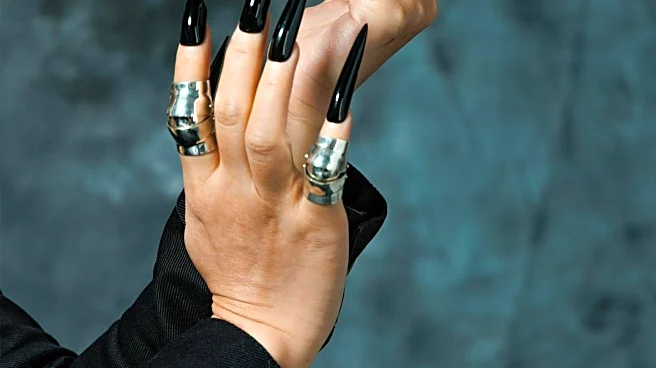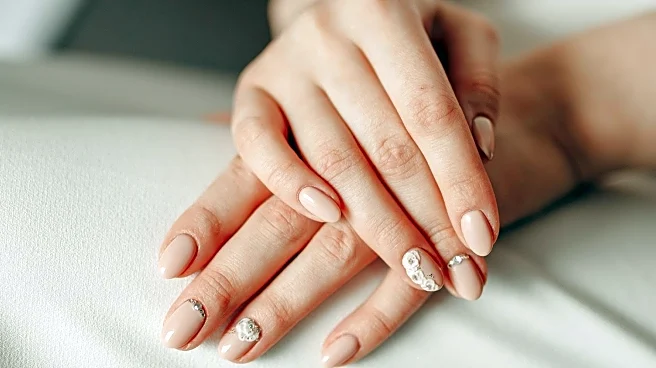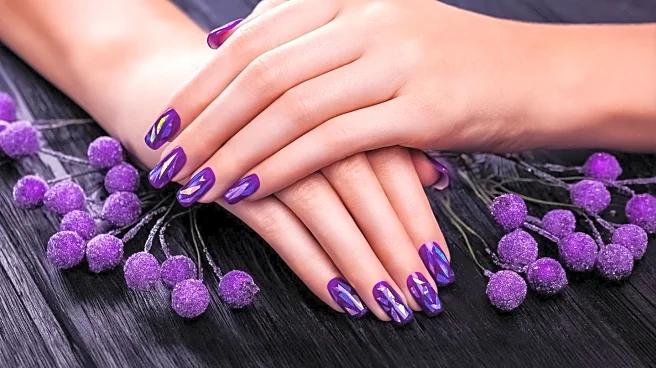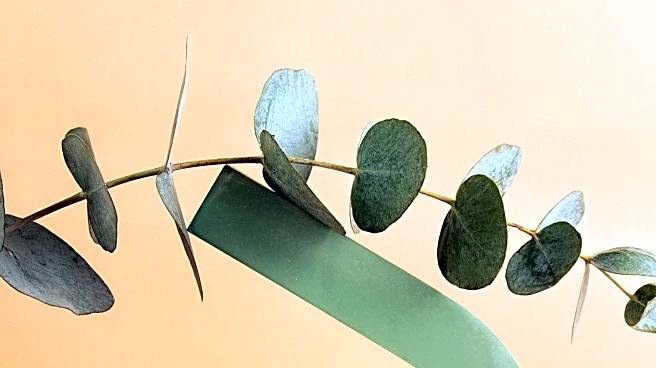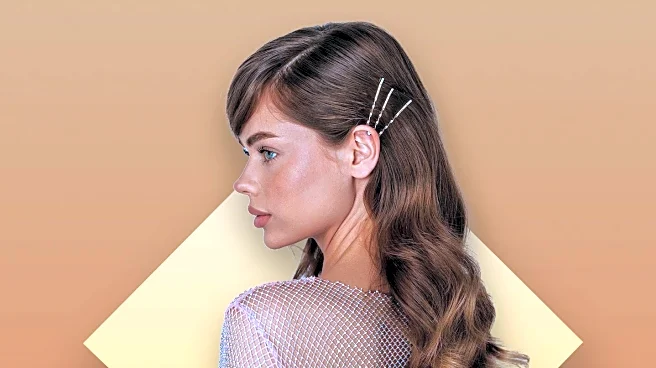What's Happening?
Maison Margiela's Tabi shoes, known for their distinctive split-toe design, have inspired a new trend in nail art. The Tabi shoe, first introduced in 1988 by Martin Margiela, draws inspiration from traditional Japanese split-toe socks. Recently, Australian manicurist Molly Jones created a Tabi-inspired manicure, which has gained popularity online. The manicure involves using Aprés Gel X tips shaped into a ballerina form, followed by a French manicure with cream polish that mimics the curvature of Tabi flats. The design is completed with a bow and a split created using a needle-nose diamond drill bit, resembling the shoe's iconic split-toe feature. This trend has sparked mixed reactions, similar to the divisive opinions surrounding the Tabi shoes themselves.
Why It's Important?
The emergence of the Tabi-inspired manicure highlights the influence of fashion on beauty trends, demonstrating how iconic designs can transcend their original medium. This trend reflects the growing intersection between fashion and beauty, where elements from one industry inspire innovations in another. For the beauty industry, this represents an opportunity to capitalize on fashion-driven designs, potentially attracting new customers interested in unique and avant-garde styles. Additionally, the trend underscores the cultural impact of Maison Margiela's designs, which continue to provoke discussion and inspire creativity across various sectors.
What's Next?
As the Tabi manicure gains traction, it is likely that more nail artists will experiment with similar designs, potentially leading to a wider array of fashion-inspired nail art. Beauty brands may also explore collaborations with fashion designers to create exclusive nail products that capture the essence of iconic fashion pieces. The trend could prompt discussions within the beauty community about the balance between wearable art and avant-garde designs, influencing future nail art trends and consumer preferences.
Beyond the Headlines
The Tabi-inspired manicure raises questions about the cultural appropriation of traditional Japanese designs, as the original Tabi socks have historical significance. This trend may spark conversations about the ethical implications of borrowing cultural elements for fashion and beauty purposes. Additionally, the popularity of such niche designs could influence broader fashion and beauty trends, encouraging consumers to embrace more daring and unconventional styles.

